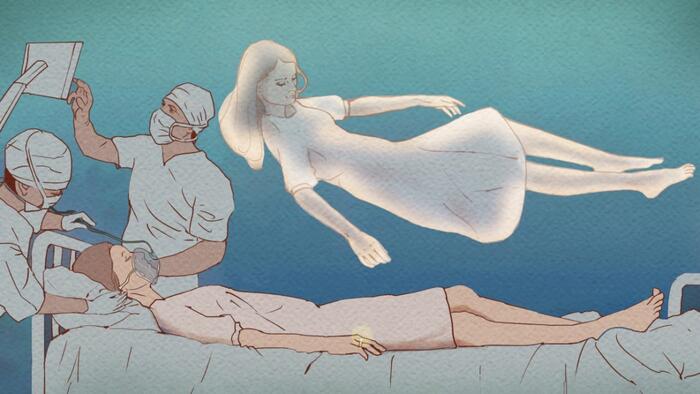Vicki Umipeg’s extraordinary story begins with her premature birth at 22 weeks, leading to her lifelong blindness due to optic nerve damage. At the age of 22, Vicki experienced a traumatic event when she was thrown from a vehicle in Seattle, resulting in severe injuries, including skull fractures and a concussion. While undergoing emergency care in the hospital, she had a notable near-death experience (NDE) where she found herself floating near the ceiling, observing her body on an operating table. This marked an incredible moment, as Vicki, who had been blind her entire life, suddenly had panoramic vision and recognized her own wedding ring—an object she had never seen before. The profound insights she gained during this experience reshaped her understanding of the world, including intuitive grasp over complex scientific concepts and languages.
Dr. Jeffrey Long, a notable radiation oncologist, has spent over 25 years studying near-death experiences, collecting a significant database of over 4,000 cases. Through his research, he identified common elements shared by individuals who undergo NDEs, akin to findings by Dr. Raymond Moody, often recognized as the pioneer in this field. Common reported experiences include out-of-body sensations, painlessness, traveling through tunnels, encounters with deceased loved ones, life reviews, and overwhelming feelings of love and peace, all of which Vicki’s experience reflected. Vicki’s 360-degree vision during her NDE set a powerful precedent for understanding how NDEs challenge conventional perceptions of consciousness and the limitations of physical existence.
Historically, reports of near-death experiences have often been dismissed by the scientific community as anecdotal or influenced by cultural beliefs. However, a significant shift has occurred since the late 20th century, with the formation of the International Association for Near-Death Studies, which has fostered scientific inquiry into these phenomena. Long’s curiosity about NDEs first arose when he stumbled upon an article discussing the experiences of patients who, despite being unconscious, reported observing events in detail around their clinical states. This prompted him to advocate for understanding NDEs outside the constraints of conventional medical paradigms.
Long emphasizes that numerous skeptical explanations for NDEs often fail to account for the consistent and vivid reports from experiencers. These include theories involving hallucinations, hypoxia, or endorphin release, none of which adequately explain the lucid, organized consciousness often reported during NDEs. Studies have indicated that a significant percentage of resuscitated patients report NDEs, counter to predictions that hypoxia would lead to confusion and diminished awareness. The persistence of specific experiences under general anesthesia further complicates skeptical models, suggesting that NDEs cannot merely be the product of brain function or psychological constructs.
Moreover, the universality of NDEs across diverse cultures and beliefs further strengthens their significance. Long’s research has revealed that regardless of an individual’s background—be it religious or secular—many individuals report similar experiences during NDEs. This challenging observation has been consistently supported by accounts from individuals who experienced NDEs amidst major cultural events, such as the Tangshan earthquake in China, indicating a shared human element in the experience of dying and potentially affirming the existence of consciousness that transcends cultural or personal belief systems.
Encounters with a being of light, often interpreted as a divine figure, are commonly reported in NDEs. Long’s investigations into these encounters yield compelling insights, showing significant increases in belief in God and spiritual transformation post-NDE. His findings suggest that the experience of a loving, accepting presence reinforces a life-affirming perspective that resonates deeply with many. Ultimately, Long reflects on the essence of NDEs, positing that these experiences provide a profound understanding of human consciousness beyond biological confines, offering a universally positive message about existence and hope for humanity—one that transcends our physical limitations and redefines our comprehension of life and death.

